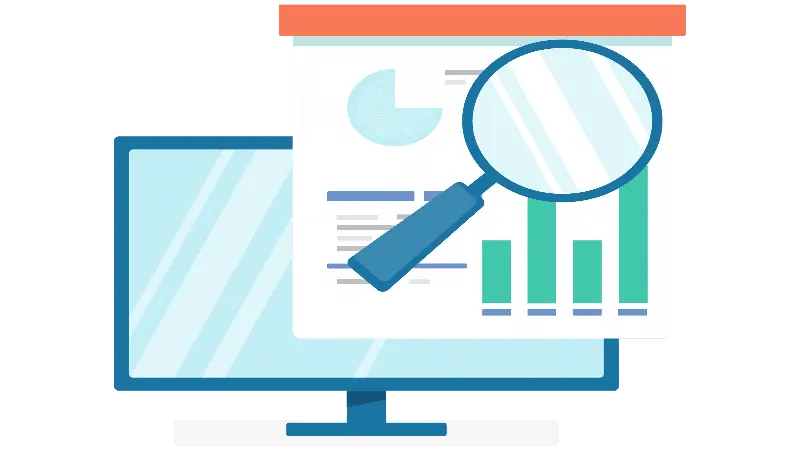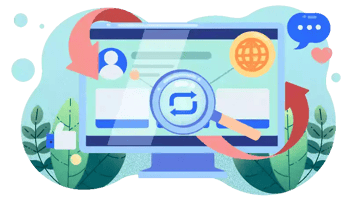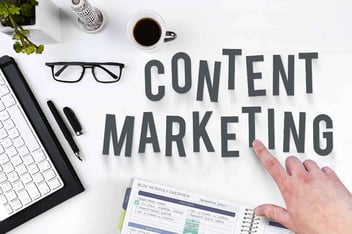Formate de imagine: SEO, viteză, social media. Optimizați-le acum!
Având în vedere că conținutul este peste tot, puterea conținutului vizual nu poate fi supraestimată. De la creșterea clasamentului dvs. SEO la îmbunătățirea vitezei de încărcare a paginii și optimizarea pentru social media, formatele de imagine potrivite pot face sau desface succesul dvs. online.
Am încercat diverse formate de imagine și am găsit ceea ce funcționează cel mai bine și vom împărtăși acest lucru cu dvs.

Optimizarea SEO pentru imagini
Content marketing în SEO este semnificativ, iar imaginile sunt acoperite sub umbrela conținutului. SEO pentru imagini este procesul de optimizare a imaginilor pentru motoarele de căutare. Acest lucru implică utilizarea cuvintelor cheie și a numelor de fișiere potrivite, precum și comprimarea imaginilor pentru a îmbunătăți timpul de încărcare a paginii. Image SEO vă poate ajuta să îmbunătățiți clasamentul site-ului dvs. în rezultatele căutării, să atrageți mai mulți vizitatori și să creșteți implicarea. Există multe beneficii ale SEO pentru imagini, inclusiv:
-
Îmbunătățirea clasării în motoarele de căutare: Imaginile optimizate pot ajuta site-ul dvs. să se claseze mai sus în rezultatele căutării pentru Google Images și interogările de căutare generale. Acest lucru se datorează faptului că motoarele de căutare utilizează numele fișierului, textul alt și alți factori pentru a înțelege despre ce sunt imaginile dvs.
-
Creșterea traficului pe site: Atunci când imaginile dvs. se clasează mai sus în rezultatele căutării, mai mulți oameni le vor vedea și vor face clic pe site-ul dvs. web, ceea ce poate duce la o creștere semnificativă a traficului.
-
Îmbunătățirea implicării utilizatorilor: Imaginile optimizate pot contribui, de asemenea, la îmbunătățirea implicării utilizatorilor pe site-ul dvs. web. Este mai probabil ca vizitatorii să rămână pe o pagină mai mult timp și să citească mai mult conținut dacă există imagini interesante și relevante la care să se uite.
-
Îmbunătățirea experienței utilizatorului: Imaginile optimizate pot contribui, de asemenea, la îmbunătățirea experienței generale a utilizatorului pe site-ul dvs. web. Atunci când imaginile se încarcă rapid și sunt formatate corect, site-ul web este mai plăcut.
Cum să vă optimizați imaginile pentru SEO
-
Utilizați nume de fișiere descriptive: Numele de fișier al imaginii dvs. ar trebui să fie descriptiv și să includă cuvântul-cheie pentru care doriți ca imaginea să se claseze. De exemplu, dacă aveți o imagine a unei pisici, numele fișierului ar putea fi "black cat.webp".
-
Scrieți un text alt informativ: Textul alt este o scurtă descriere a imaginii afișată utilizatorilor care nu pot vedea imaginea, cum ar fi cei care utilizează cititoare de ecran. Textul alt ar trebui să fie, de asemenea, descriptiv și să includă cuvântul-cheie pentru care doriți ca imaginea să se claseze.
-
Comprimați-vă imaginile: Comprimarea imaginilor va reduce dimensiunea fișierului fără a sacrifica calitatea. Acest lucru va ajuta paginile dvs. să se încarce mai repede, îmbunătățind experiența utilizatorului și SEO.
-
Utilizați formatul corect al imaginii: Cele mai comune formate de imagine sunt JPEG, PNG, GIF și WEBP. Diferitele formate de imagine servesc unor scopuri diferite, dar recomandăm Webp pentru calitatea generală a imaginii și viteza de încărcare (vom discuta acest lucru mai detaliat mai jos).
-
Utilizați sitemap-uri de imagini: Un sitemap de imagini este un fișier care enumeră toate imaginile site-ului dvs. web. Acest lucru poate ajuta motoarele de căutare să descopere și să indexeze imaginile dvs. mai eficient.
-
Utilizați date structurate: Datele structurate reprezintă o modalitate de a furniza motoarelor de căutare informații suplimentare despre imaginile dumneavoastră. Acest lucru poate ajuta motoarele de căutare să înțeleagă mai bine despre ce sunt imaginile dvs. și cum se leagă acestea de conținutul dvs.
Tehnici SEO avansate
-
Utilizați imagini relevante: Utilizați numai imagini relevante pentru conținutul dvs. Acest lucru va ajuta motoarele de căutare să înțeleagă despre ce este vorba în pagina dvs. și să o clasifice corespunzător.
-
Utilizați imagini de înaltă calitate: Utilizați imagini de înaltă calitate care sunt atrăgătoare din punct de vedere vizual. Acest lucru va contribui la îmbunătățirea experienței utilizatorului și va face site-ul dvs. mai atractiv.
-
Utilizați o varietate de dimensiuni ale imaginilor: Variați dimensiunea imaginilor dvs. pentru a îmbunătăți aspectul paginilor dvs. și pentru a le face mai atractive din punct de vedere vizual.
-
Optimizați paginile dvs. de destinație a imaginilor: Asigurați-vă că paginile în care sunt localizate imaginile dvs. sunt optimizate pentru SEO. Acest lucru include utilizarea de cuvinte-cheie relevante în titlu, descriere și titluri.
-
Utilizați social media pentru a vă promova imaginile: Partajați imaginile dvs. pentru a crește expunerea acestora și pentru a atrage mai mulți vizitatori pe site-ul dvs.
Ghidul Intern de Imagini al Aspiration Marketing:
-
Imaginile trebuie să fie în format WebP – nu doar imaginile de prezentare.
-
Imaginile ar trebui să fie formate la 800/450px.
-
Folosiți formatul 16:9 pentru imagini, în special pentru postările pe rețelele sociale.
-
Dimensiunile tuturor fișierelor ar trebui să fie mai mici de 50kb.
Formate de imagine moderne
În peisajul digital de astăzi, formatele moderne de imagine rescriu regulile imaginilor web. Evoluția tehnologiei a dat naștere unor formate mai eficiente, iar formatul WebP este o schimbare radicală pentru performanța site-ului dvs. web.
Imaginile WebP oferă capacități superioare de compresie fără a compromite calitatea imaginii. Acest lucru duce la dimensiuni mai mici ale fișierelor, cruciale pentru timpi de încărcare mai rapizi. Motoarele de căutare acordă prioritate site-urilor web mai rapide, ceea ce face din WebP un atu neprețuit în arsenalul dvs. SEO.
Trecerea la WebP nu este doar o recomandare; formatele de imagine de ultimă generație sunt necesare pentru a rămâne competitivi în domeniul digital. Cu toate acestea, nu este vorba doar despre utilizarea WebP pentru imaginile principale; vă încurajăm să o implementați la nivel general pentru toate imaginile site-ului dvs. Această abordare cuprinzătoare asigură că fiecare aspect al site-ului dvs. este optimizat pentru viteză și SEO, nu doar câteva aspecte selectate.
Dimensiuni optimizate ale imaginilor
Mărimea statică și formatarea corectă a fișierelor sunt adesea trecute cu vederea, dar sunt la fel de importante în călătoria dvs. SEO. Motoarele de căutare apreciază consecvența, iar atunci când imaginile sunt dimensionate dinamic, acestea pot avea un impact negativ asupra timpilor de încărcare a paginilor și asupra experienței utilizatorilor.
Pentru a rezolva această problemă, asigurați-vă că imaginile dvs. au o dimensiune și un format fixe, statice. Utilizați rezoluții standard precum 800x450 pixeli, care sunt plăcute din punct de vedere vizual și asigură uniformitatea pe întregul site. Această consecvență a dimensiunilor imaginilor contribuie la un site web mai armonios și mai ușor de utilizat, ceea ce favorizează motoarele de căutare.
Optimizarea vitezei paginii
Viteza paginii este un factor critic care poate face sau desface succesul site-ului dvs. web. Nu este vorba doar despre comoditatea încărcării rapide a paginilor web; este vorba despre asigurarea unei experiențe excelente pentru utilizator, despre creșterea clasamentului SEO și despre creșterea conversiilor. Pe măsură ce ne continuăm explorarea formatelor de imagine și a impactului acestora asupra prezenței dvs. online, este esențial să aprofundăm optimizarea vitezei paginii.
1. Comprimați eficient imaginile
Imaginile sunt parte integrantă a conținutului web, dar pot fi, de asemenea, unul dintre cele mai grele elemente de pe o pagină web, afectând semnificativ timpii de încărcare. Tehnicile eficiente de compresie a imaginilor, cum ar fi compresia fără pierderi și compresia cu pierderi, pot reduce dimensiunea fișierelor fără a sacrifica calitatea. După cum am subliniat în secțiunea noastră anterioară privind formatele de imagine, adoptarea WebP și a altor formate moderne poate juca, de asemenea, un rol esențial în compresia imaginilor și încărcarea mai rapidă.
2. Eliminați solicitările inutile de imagini
Minimizarea numărului de solicitări de imagini pe o pagină este la fel de crucială. Fiecare solicitare de imagine consumă resursele serverului și crește timpul de încărcare. Ca parte a strategiei dvs. de optimizare a imaginilor, luați în considerare utilizarea sprites CSS, care combină mai multe imagini într-un singur fișier, reducând numărul de solicitări.
3. Reduceți fișierele JavaScript și CSS
Cu cât o pagină web are mai multe fișiere JavaScript și CSS, cu atât durează mai mult încărcarea acesteia. Minimizarea și consolidarea acestor fișiere poate eficientiza performanța site-ului dvs. În plus, profitați de încărcarea asincronă și amânată pentru scripturile neesențiale pentru a vă asigura că pagina dvs. web începe să fie redată rapid.
4. Utilizați memoria cache a browserului
Browser caching permite vizitatorilor care revin să vă încarce site-ul mai rapid, deoarece browserele lor pot stoca anumite resurse ale site-ului. Utilizați antetele de caching în răspunsurile dvs. HTTP pentru a indica browserului ce resurse poate memora. Acest lucru reduce necesitatea de a reîncărca resursele la fiecare vizită, contribuind la timpi de încărcare mai rapizi.
5. Minimizați timpul de răspuns al serverului
Optimizarea timpilor de răspuns ai serverului este un aspect critic al vitezei paginii. Un server bine configurat răspunde mai rapid, asigurând livrarea rapidă a conținutului către utilizator. Pentru a îmbunătăți timpii de răspuns ai serverului, luați în considerare optimizările din partea serverului, rețelele de livrare de conținut (CDN) și minimizarea utilizării API-urilor terțe.
Rolul formatelor de imagine în viteza paginii
Am discutat deja despre importanța formatelor de imagine în contextul SEO, dar este esențial să subliniem și rolul lor semnificativ în optimizarea vitezei paginii. Să aprofundăm modul în care formatele de imagine, în special WebP, pot contribui la o încărcare mai rapidă a site-ului:
-
Timpii de încărcare mai rapizi: WebP nu este doar un format optimizat pentru SEO; este o putere pentru optimizarea vitezei paginii. Tehnicile eficiente de compresie ale acestui format au ca rezultat dimensiuni mai mici ale fișierelor de imagine, care, la rândul lor, conduc la timpi de încărcare mai rapizi. În prezent, utilizatorii nu mai au răbdare pentru site-urile care se încarcă lent, iar motoarele de căutare penalizează astfel de site-uri prin coborârea lor în clasament.
-
Dimensiuni adecvate și design receptiv: Formatul corect al imaginii este doar o parte a ecuației. Este la fel de important să vă asigurați că imaginile sunt afișate corespunzător pentru dispozitivul utilizat. Designul responsiv, care adaptează conținutul la diferite dimensiuni ale ecranului, este esențial pentru viteza paginii. Evitarea imaginilor supradimensionate pe ecrane mici reduce transferul inutil de date și îmbunătățește timpii de încărcare.
Formate de imagine pentru social media
În social media, unde imaginile sunt moneda de schimb, formatul adecvat al imaginilor poate fi biletul de aur către succes. Pe măsură ce analizăm formatele imaginilor, este esențial să înțelegem impactul acestora asupra prezenței dvs. pe platformele sociale, unde atenția utilizatorilor este mai scurtă, iar prima impresie este esențială.
Raportul de aspect 16:9
Raportul de aspect 16:9 este un erou în ceea ce privește redarea pe social media. De ce este important? Deoarece este cel mai frecvent utilizat raport de aspect pe platforme populare precum Facebook, Instagram și Twitter. Atunci când utilizați acest format, este mai probabil ca imaginile dvs. să fie afișate optim în feed-urile utilizatorilor, asigurându-vă că conținutul dvs. le captează atenția.
Atunci când o imagine apare bine tăiată și echilibrată în feed-ul social media al unui utilizator, conținutul dvs. pare profesional și îi atrage pe utilizatori să exploreze mai mult. Raportul de aspect 16:9 este un standard care se integrează perfect în peisajul social media, sporind credibilitatea și fiabilitatea mărcii dvs.
Optimizarea imaginilor pentru a se potrivi acestui raport de aspect asigură că imaginile dvs. arată cât mai bine, fără tăiere sau distorsionare. Aderarea la acest standard demonstrează atenția dumneavoastră la detalii și angajamentul de a oferi o experiență premium în social media.
Dimensiunea fișierului de imagine pentru social media
În social media, utilizatorii cer o gratificare instantanee. Imaginile care se încarcă lent sunt adesea un bilet cu sens unic pentru utilizatorii care trec pe lângă conținutul dvs. fără să se gândească de două ori. Dimensiunea fișierului de imagine este extrem de importantă pentru a vă asigura că imaginile dvs. captivează publicul.
Cercetările și experiența noastră în domeniul marketingului digital ne-au condus la o regulă de aur pentru dimensiunile fișierelor de imagine din rețelele sociale: păstrați-le sub 50 KB. Dimensiunile mai mici ale fișierelor înseamnă încărcare mai rapidă, captarea și reținerea atenției utilizatorilor.
Cheia este echilibrarea calității cu o dimensiune compactă a fișierului. Utilizarea unor formate de imagine eficiente, cum ar fi WebP, intră din nou în joc. Capacitățile superioare de compresie ale WebP vă permit să mențineți calitatea imaginii în timp ce reduceți dimensiunea fișierelor, ceea ce îl face alegerea ideală pentru partajarea pe rețelele sociale.
Gândiți-vă la acest lucru: un fișier de imagine mare poate dura câteva secunde pentru a se încărca pe dispozitivul unui utilizator, ceea ce duce la un scroll frustrat pe lângă conținutul dvs. Pe de altă parte, o imagine mai mică, bine optimizată, se va încărca instantaneu, atrăgând utilizatorii să se implice în postarea dvs. Este o chestiune de secunde, dar acele secunde pot face diferența în ceea ce privește implicarea în social media.
Instrumente pentru dimensionarea și formatarea imaginilor
Pentru a vă ajuta să începeți, iată o mică listă de instrumente la îndemână pentru a vă ajuta în formatarea, comprimarea, conversia și dimensionarea imaginilor:
-
TinyPNG: Acest instrument ușor de utilizat este specializat în comprimarea imaginilor, reducând dimensiunea fișierelor și menținând în același timp calitatea imaginilor. Ideal pentru încărcarea mai rapidă a paginilor și stocarea eficientă. Are, de asemenea, un convertor pentru diferite formate, WebP, JGEP și PNG. TinyPNG este unul dintre favoritele Aspiration Marketing.
-
WebP Converter: Un instrument bazat pe web care convertește imaginile existente în formatul WebP. WebP este renumit pentru dimensiunile mai mici ale fișierelor și timpii de încărcare mai rapizi.
-
Canva: Canva este o platformă versatilă de design grafic cu o interfață ușor de utilizat. Este perfectă pentru crearea, redimensionarea și formatarea imaginilor pentru diverse platforme de social media și materiale de marketing.
-
ImageOptim: Un instrument desktop disponibil pentru utilizatorii Mac, ImageOptim este excelent pentru compresia imaginilor fără pierderi, în special dacă trebuie să optimizați imaginile offline.
-
Optimizilla: Un instrument online de compresie a imaginilor care vă permite să încărcați mai multe imagini simultan, ceea ce îl face o soluție eficientă din punct de vedere al timpului pentru optimizarea masivă a imaginilor.
-
Adobe Photoshop: Standardul industrial pentru editarea imaginilor. Acesta oferă instrumente puternice pentru formatarea, redimensionarea și optimizarea imaginilor în diverse scopuri.
-
GIMP: GNU Image Manipulation Program este o alternativă gratuită și open-source la Adobe Photoshop, oferind capacități robuste de editare a imaginilor.
-
Kraken.io: Un instrument online de optimizare a imaginilor care automatizează procesul de compresie a imaginilor. Acesta oferă API-uri și pentru dezvoltatori.
-
ImageMagick: Un instrument de linie de comandă pentru procesarea și conversia pe loturi a imaginilor. Este foarte versatil și este adesea utilizat în dezvoltarea web.
-
Squoosh: O aplicație web de la Google care permite utilizatorilor să ajusteze manual setările de compresie a imaginilor, oferind un control complet asupra optimizării imaginilor.
Aceste instrumente răspund diferitelor nevoi ale utilizatorilor, de la redimensionarea simplă a imaginilor online la editarea și compresia avansată a imaginilor pentru profesioniști și dezvoltatori. Utilizatorii pot alege instrumentul care se aliniază cel mai bine cu cerințele și expertiza lor.
Stăpâniți formatele de imagine pentru succesul în marketingul digital
În peisajul de marketing digital în evoluție rapidă, în care fiecare clic, derulare și angajament are o valoare imensă, utilizarea strategică a formatelor de imagine apare ca o schimbare critică a jocului. De la consolidarea clasamentului SEO la îmbunătățirea vitezei de încărcare a paginii și optimizarea pentru lumea mereu competitivă a social media, formatele de imagine pe care le alegeți vă pot dicta succesul online.
La Aspiration Marketing, suntem mai mult decât comercianți; suntem partenerii dvs. în obținerea succesului digital și în creșterea traficului și a conversiilor. Pe măsură ce porniți în călătoria dvs. pentru a maximiza potențialul formatelor de imagine, amintiți-vă că fiecare pixel deține potențialul de a ridica prezența online a mărcii dvs. Cu formatele de imagine drept aliați, sunteți pe drumul cel bun către măreția digitală.
Acest conținut este disponibil și în:
- Germană: Bildformate: Beste Formate für SEO, Performance und soziale Medien
- Engleză: Image Formats: Best Formats for SEO, Page Speed, and Social Media
- Spaniolă: Mejor formato imágenes: SEO, velocidad y redes sociales
- Franceză: Formats d'image: Formats optimaux pour SEO, vitesse et réseaux sociaux
- Italiană: Formati immagine: guida SEO, velocità pagina e social media
- Chineză: 图片格式:搜索引擎优化、页面速度和社交媒体的最佳格式








Lasă un comentariu cu părerea ta.